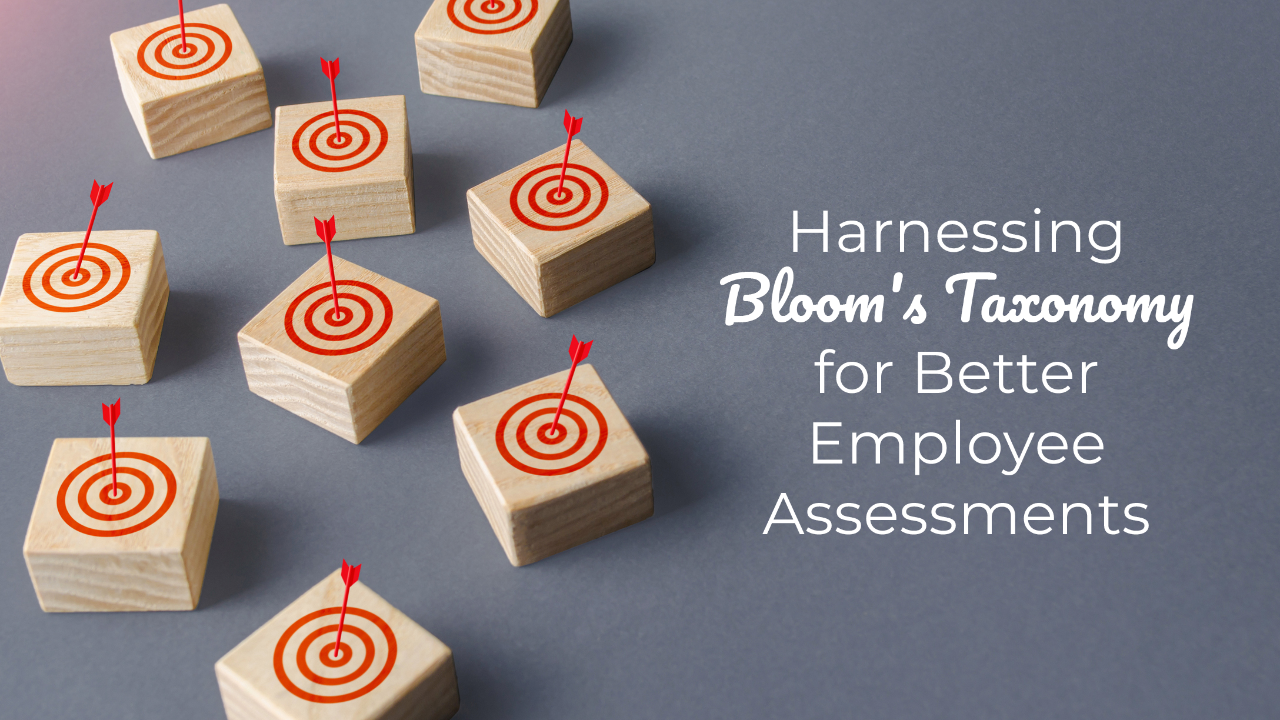Harnessing Bloom's Taxonomy for Better Employee Assessments
by Amanda Kizer

Bloom's Taxonomy, a model developed by educational psychologist Benjamin Bloom, outlines various levels of cognitive learning, from the simplest (remembering) to the most complex (creating). It's a valuable tool for educators, but its potential reaches beyond traditional classroom settings. This article demonstrates how to apply Bloom's Taxonomy as a theoretical framework to design more effective multiple-choice assessment questions for employee training.
Understanding Bloom's Taxonomy
Bloom's Taxonomy features six cognitive levels: Remembering, Understanding, Applying, Analyzing, Evaluating, and Creating (Krathwohl, 2002). The power of this taxonomy lies in its ability to ensure that learning is not just memorization but that it involves higher-order thinking skills such as problem-solving and critical thinking.
Improving Training Assessments with Bloom’s Taxonomy
In many organizations, employee training assessments primarily test rote memory. However, this approach does not necessarily measure the understanding or ability to apply knowledge, both vital in a working environment. Using Bloom's Taxonomy can help generate questions at different cognitive levels, better assessing employee learning.
Let's look at three examples in a safety training context.
Example 1
- What does the OSHA acronym stand for? (Remembering)
- Why is OSHA important in the workplace? (Understanding)
- How would you implement OSHA guidelines in a scenario where a co-worker is not following safety protocols? (Applying)
↗️ In the first example, the question only tests recall. The second example requires understanding of OSHA’s role. However, the third question requires applying that knowledge in a realistic scenario, which is much more indicative of true learning and readiness to apply this knowledge in real-world situations.
Example 2
- What is the first aid procedure for a burn? (Remembering)
- Why is it important to cool a burn with cold water? (Understanding)
- Given a situation where a colleague suffers a burn, what steps would you take and why? (Applying)
↗️ In these examples, the progression from testing memory to understanding to application becomes clear.
Example 3
- What is the color of a safety helmet for construction site visitors? (Remembering)
- Why are different colors used for safety helmets in construction sites? (Understanding)
- Analyze a situation where the proper helmet color coding is not followed. What could be the potential outcomes and solutions? (Analyzing)
↗️ The final set illustrates a progression into even higher cognitive levels. The best question requires not just application, but analysis, a higher-order thinking skill.
Review Your Training Assessment Questions
Here are some actions you can take to start evaluating and improving your multiple choice assessment questions.
- Assess the Cognitive Level. Identify the cognitive level of each question. Are they mainly remembering or understanding? Aim to include higher levels such as applying, analyzing, or evaluating.
- Align Questions with Training Objectives. The question's level should align with your training objectives. If your goal is for employees to apply safety regulations, your assessment should include application-level questions.
- Use Realistic Scenarios. Crafting questions based on realistic scenarios promotes higher-order thinking and tests whether employees can apply their learning in practical ways.
Bloom's Taxonomy can significantly improve the efficacy of your employee training programs. By following these guidelines, we can better prepare employees to meet the demands of their roles, ultimately leading to improved productivity and safety in the workplace.
References:
Krathwohl, D. R. (2002). A Revision of Bloom's Taxonomy: An Overview. Theory Into Practice, 41(4), 212-218.
You May Also Like
These Related Stories

BLUF Your Way to Peak Email Productivity

3 Ways to Boost Employee Performance with Mental Models


No Comments Yet
Let us know what you think